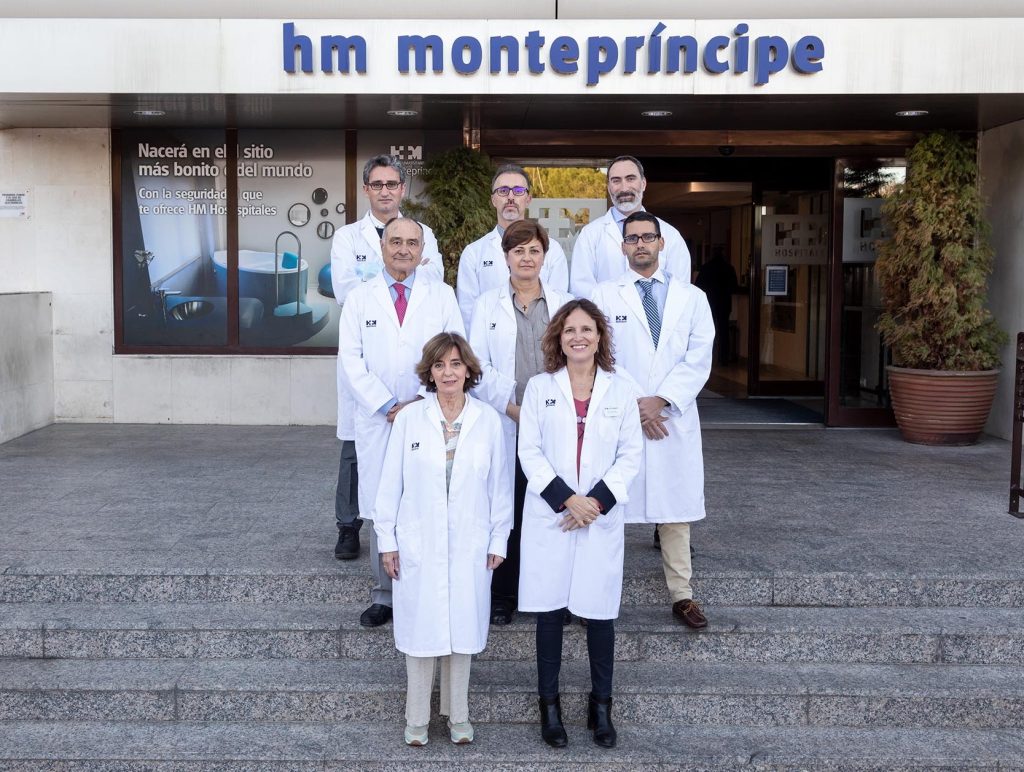The Congenital Heart Disease Unit (UCC) and Paediatric Cardiology Unit at the Centro Integral de Enfermedades Cardiovasculares HM CIEC is a pioneer and a unique benchmark in Spanish private healthcare, offering a comprehensive care model for patients with congenital heart disease at all stages of life—from fetal diagnosis to adulthood.
Established in 1982 by Drs Fernando Villagrá, Mónica Rodríguez, and José Ignacio Herráiz, the Unit was integrated into Hospital Universitario HM Montepríncipe in 1998 and has since evolved into a national and international reference unit. It is currently led by Dr Sandra Villagrá, cardiologist, and Dr Álvaro González Rocafort, cardiovascular surgeon, heads of the UCC at HM Hospitales.
The team comprises 19 professionals, including cardiologists, surgeons, haemodynamic specialists, anaesthetists, and a psychologist, with additional support from specialists such as paediatricians, intensivists, geneticists, adult cardiologists, haematologists, radiologists, gynaecologists, internists, and hepatologists. This enables a multidisciplinary approach to each case. ‘We are a team of nearly 30 professionals working together. Our goal is to ensure continuous, tailored follow-up for each patient, guaranteeing effective treatment and personalised, human-centred care,‘ emphasises Dr Villagrá.
‘At HM CIEC, we are proud to host a Congenital Heart Disease Unit that is a pioneer and benchmark in Spain, with outstanding professionals who comprehensively care for all types of congenital heart disease patients—from fetal diagnosis to adulthood,‘ says Dr Leticia Fernández-Friera, Director of HM CIEC.
High level of excellence
Over the last 10 years, this Unit has conducted more than 54,814 consultations, with 27% of adult patients. Additionally, 5,556 fetal echocardiograms, 366 catheterisations, and 508 highly complex surgeries have been performed. ‘Our surgical mortality rate has been just 2% over the last five years and 0% in the last two, reflecting an exceptionally high level of excellence,‘ states the Unit’s Director, who adds: ‘We also have state-of-the-art technology for diagnosing and treating congenital heart disease, including angio-CT, cardiac MRI, and advanced interventional catheterisation and surgical techniques.‘
The UCC has developed multidisciplinary subunits to address the specific needs of each patient stage. Among these are the Gestantes con Cardiopatía Unit, which ensures safe pregnancy monitoring for women with congenital heart disease and optimal care for both mother and baby; the Cardiopatías Familiares Unit, for diagnosing, monitoring and treating families with genetically linked heart conditions; the Arritmias Unit, in collaboration with Dr Jesús Almendral’s team; the Valoración cardiovascular deportiva Unit for athletes with or without congenital heart disease; and the consultant Médico-Quirúrgica, ‘where cardiologists and surgeons jointly assess and advise on therapeutic management,‘ clarifies Dr Villagrá.
Currently, 90% of congenital heart diseases are diagnosed at the fetal stage in specialised units. ‘The goal is to inform, guide, and prepare families about the condition, expected postnatal management strategies, and life prognosis. Organising delivery is also crucial to improving care, management, and long-term outcomes,‘ explains Dr Villagrá. ‘The prevalence of these conditions in adult patients is increasing, surpassing paediatric cases. This is due to fetal screening and pregnancy termination, which have reduced the incidence of severe congenital heart defects in many developed countries. Meanwhile, the growing adult population reflects a greater understanding of disease progression, alongside advances in preventive measures, diagnostic techniques, surgery, and technology over recent decades. All this has significantly improved our patients’ prognosis and quality of life. That’s why specialised Adult Congenital Heart Disease Units are so vital.‘
Advances in percutaneous procedures have also been implemented to avoid surgery in some instances. Examples include the percutaneous closure of ventricular septal defects, ductus stent implantation, and partial anomalous pulmonary venous drainage correction using covered stents. Regarding surgical innovation, ‘We’ve incorporated techniques like the Cone procedure for tricuspid valve repair, the Ozaki technique for aortic valve replacement, and mitral valve procedures using compassionate Melody valve implantation in children with very small annuli where conventional repair or replacement isn’t possible,‘ she adds. ‘Thanks to technological progress and percutaneous/surgical therapeutic techniques, over 90% of children born today with congenital heart disease would survive into adulthood.‘
Diagnostically, imaging techniques like MRI and CT have vastly improved the study of specific structures, volumes, and functions, offering far greater precision than ultrasound. ‘In some cases, monitoring and therapeutic indications have been simplified, reducing the need for higher-risk invasive procedures. We are currently developing a Cardiovascular Risk Factors Unit for children with obesity or other risk pathologies, as well as adults with congenital heart disease. Everything we do is for and about our patients,‘ she concludes.











